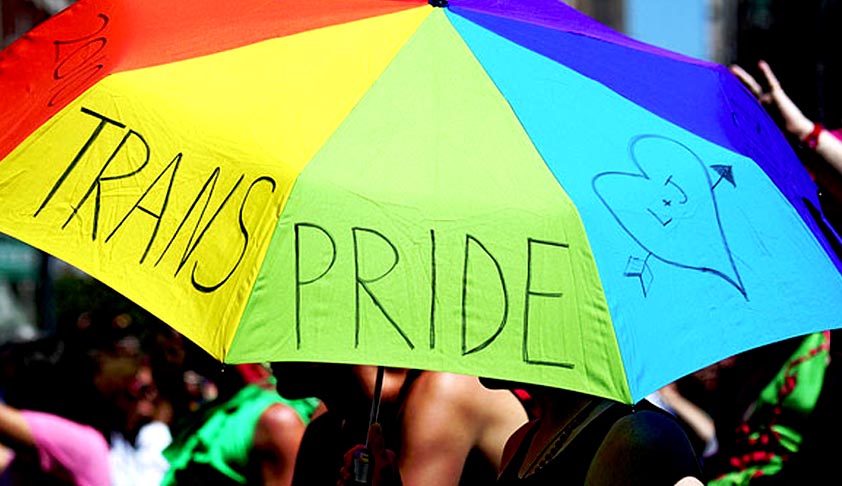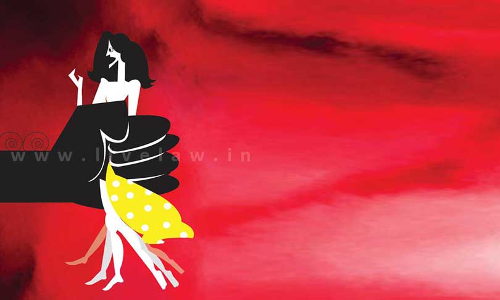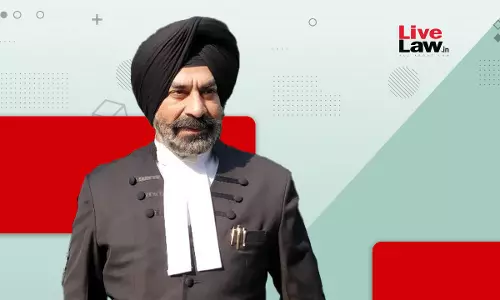Transgender rights Judgment: Seeds for a positive judgment in Sec. 377 curative petition sown?

On his last day as a Supreme Court judge, Singhvi J pronounced the much awaited Naz Foundation judgment upholding the constitutional validity of Sec. 377 of IPC. The review petition filed was dismissed by the court without allowing an oral hearing and consequently, a curative petition was filed by the petitioners which was agreed to be heard in an open court by the Chief Justice of India on...
On his last day as a Supreme Court judge, Singhvi J pronounced the much awaited Naz Foundation judgment upholding the constitutional validity of Sec. 377 of IPC. The review petition filed was dismissed by the court without allowing an oral hearing and consequently, a curative petition was filed by the petitioners which was agreed to be heard in an open court by the Chief Justice of India on 3rd April 2014.
3 days back in NALSA V. Union of India, the Supreme Court through Radhakrishnan J and Sikri J delivered a landmark judgment recognizing transgenders as a third gender, and upheld their fundamental rights enshrined under the scheme of the Constitution.
The judgment stretches from mentioning various problems and prejudices faced by the community to granting remedies and issuing directions. In the middle of these two corners lies a very careful and calculative mention of Sec. 377. Judicial discipline states that two judge benches shall not as far as possible criticize or write against a similar quantum bench. The judgment has undeniably been very cautiously written in a disciplined manner.
Para-11 of the judgment defines what will be understood by the expression ‘Transgender’ as “..the term “transgender”, in contemporary usage, has become an umbrella term that is used to describe a wide range of identities and experiences, including but not limited to pre-operative, post-operative and non-operative transsexual people, who strongly identify with the gender opposite to their biological sex; male and female.” To refer to the principle of gender neutrality subject to constitutional expectations, the judgment has correctly said that the word ‘person’ used in Art 14 is not restricted only to a male or a female and also includes ‘transgenders’. It also is correct in saying that Articles 15 and 16 prohibit discrimination against any citizen on certain enumerated grounds including the ground of ‘sex’, Article 19(1) (a) includes one’s right to expression of his self-identified gender and recognition of one’s gender identity lies at the heart of the fundamental right to dignity as under Article 21. The judgment focuses chiefly on developing the requisite level of constitutional serendipity in favour of the third gender and preventing discrimination against them featuring various prejudices and atrocities committed due to lack of enthusiastic regulatory state machinery.
However, an endeavour to look into the fathom of the judgment to check its probable impact on the curative petition is important. Radhakrishnan J in his opinion has clearly mentioned that Sec. 377 was used as an “instrument of harassment and physical abuse against Hijras and transgender persons”. However, in the next very line he mentioned the Sec. 377 judgment & wrote that “hence, we express no opinion on it since we are in these cases concerned with an altogether different issue pertaining to the constitutional and other legal rights of the transgender community and their gender identity and sexual orientation.” & then he goes on to rely upon the Yogya Karta Principles to discern between gender identity and sexual orientation. Justice Sikri’s opinion is completely silent on Sec. 377 apart from summing up Radhkrishnan J’s opinion.
The Sec. 377 judgment dealt with a challenge to constitutional validity of the provision in so far relating to penalising sexual acts in private between consenting adults as it forms a part of discrimination against sexual minorities mentioned in a pre constitution statute. The transgender’s rights judgment, in a similar fashion has answered two key questions i.e. firstly, recognition of a third gender category to facilitate legal rights and secondly, right of self identification of one’s gender. However, while in the former judgment, the court declined to adopt a view in favour of such gender identification and facilitate legal rights of sexual minorities, the latter, grants it.
The sentence ‘constitutional and other legal rights of the transgender community and their gender identity and sexual
orientation’ infact can be stretched to a novel length in itself. The ambit of the sphere of privacy which was diminished by the Sec. 377 judgment, now stands wide open even to self identification of one’s gender and subsequent rights. The principles of strict scrutiny and proportionality review which the earlier judgment did not adhere to, are now indirectly part of the legal parlance. The Sec. 377 judgment relies upon the undeclared principle of promotion of majoritarian sexual interest as a legitimate state interest, the new judgment on the other hand recognizes and records the historical role, British (read christian) advent in the country and its subsequent interest in statutory books against minoritarian sexual interest. Sec. 377 judgment, undeniably in form of a judgocratic victimisation is based on the notion that culture of silent toleration by any class of minorities shall be allowed to continue till the state legislates or de-legislates a particular statute book, while the new judgment not dealing with any provision of any legislation focuses on state’s palpable reluctance to adhere to an aggrieved minority’s response towards innumerable atrocities committed against them since ages reasoning into a ‘no more tolerance’ position by knocking court’s doors. So, though the two judgments are quiet contrary to each other in a co extensive legal parlance, yet a purposive construction of the two gives a fruitful outcome – that Sec. 377 does not fit in, anymore.Subject to my limits of comprehension, the transgender’s rights judgment will have a direct impact on the curative petition. All this unidirectionally goes against the presumption of constitutionality of Sec. 377. The court can no more rely upon the parliament as the representative body to delete the provision. It is now undoubtedly beyond reasonable thinking that the court will have to adhere to society’s hue and cry and respond judiciously. However, many key issues are still left to be determined.
Let us hope for the best. Fingers crossed.
Namit Saxena is a Law Clerk cum Research Assistant in the Supreme Court of India




